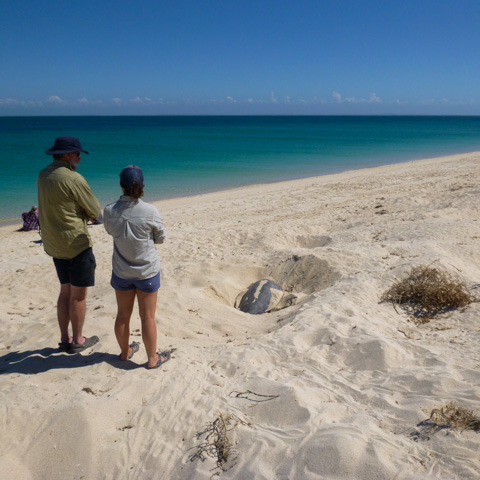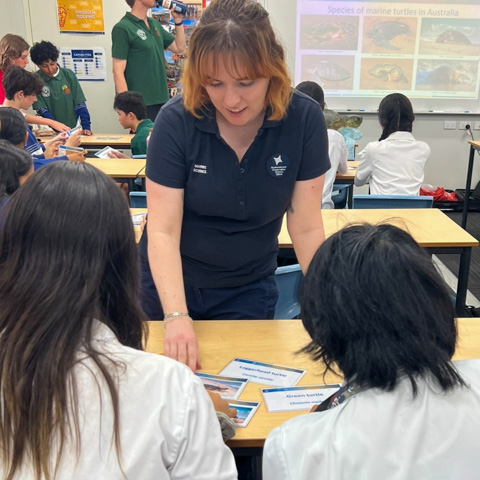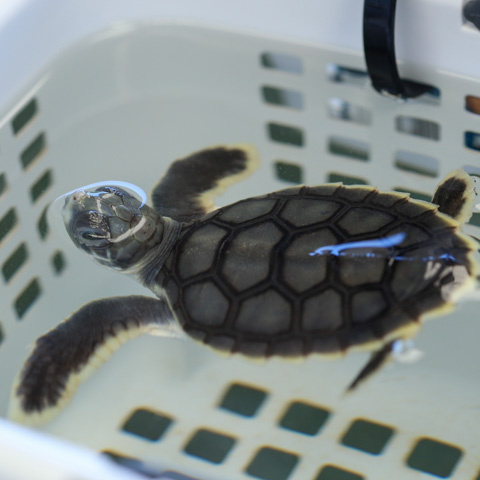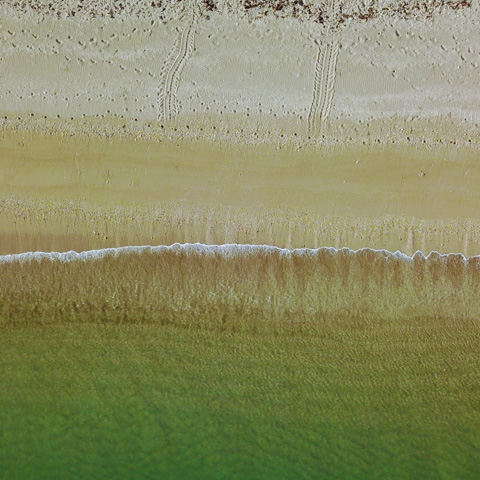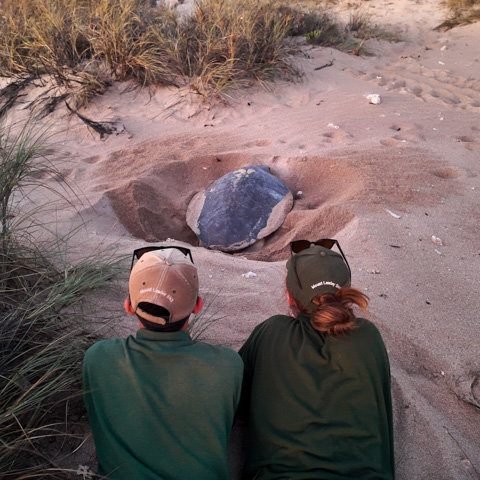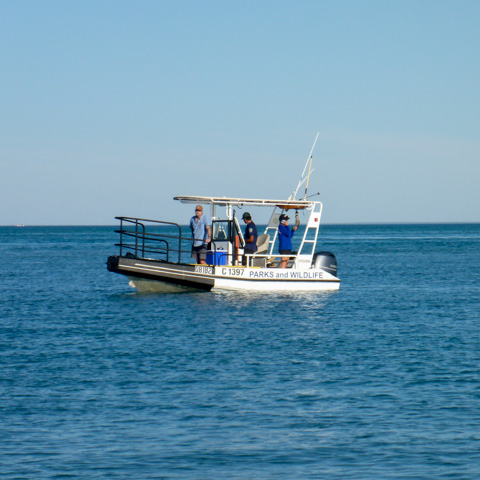What dangers do flatback turtles face?
Marine turtles face many threats throughout their life, with very few surviving through to adulthood. Major threats towards flatback turtles include climate change, plastic in our oceans, predators and coastal development.
Humans being present on nesting beaches can also be a threat to turtles in a number of ways, such as:
- Touching, picking up, taking selfies in front of and re-directing turtles all harm or stress turtles and should be avoided.
- Driving on beaches can cause damage to nests, erosion of the beach and deep tyre ruts in the sand that slow and confuse hatchlings, which increases their risk of being predated or running out of energy on their way to the ocean.
- Pets, like dogs off-lead, can dig up nests and eat eggs and pose a threat to turtles by disturbing their natural nesting behaviour.
- Humans using white lights on beaches confuses and distracts adult turtles during nesting, and can cause hatchlings to travel the wrong direction as they are attracted to the lights. This causes them to use vital energy, which means they may not survive to the ocean.
- Lighting campfires on beaches can deter turtles coming to the beach to nest, and is dangerous for hatchlings who get stuck in hot embers as they make their way to the ocean.
Learn how to keep yourself and the turtles safe by reading the Turtle Watching Code of Conduct.
Major threats to flatbacks
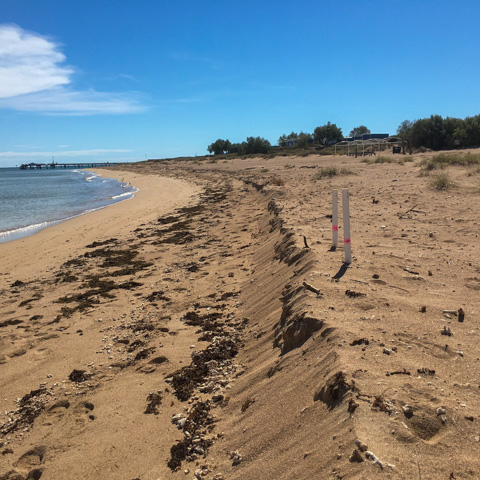
Climate change predictions show that we are likely to see an increase in severe storms, a higher sea level, and warmer air and sand temperatures as time goes on. These have all been identified as major threats to marine turtles, whose long lifespans make it difficult for them to adapt to new conditions. Current research is working on identifying which nesting beaches are likely to be affected the most, and which beaches could be the most useful to protect the population going forwards. Photo - James Gee/DBCA
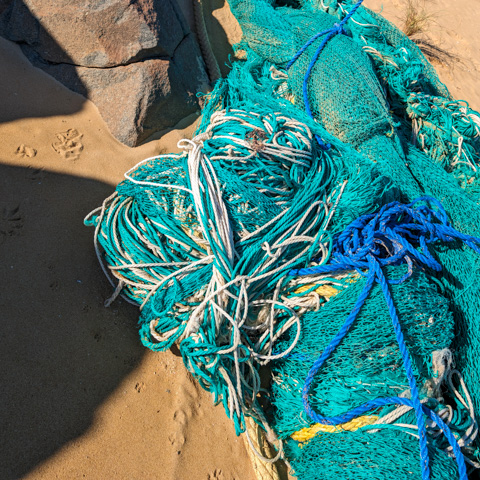
The ocean is full of items from humans that don’t belong there, such as discarded fishing nets, microplastics, and plastic bags. Turtles naturally eat floating material and research has shown that young turtles are eating a lot of plastic in their developmental years. As well as this, it is possible for turtles to become tangled in the debris. Photo - Kat Dyball/DBCA Karratha
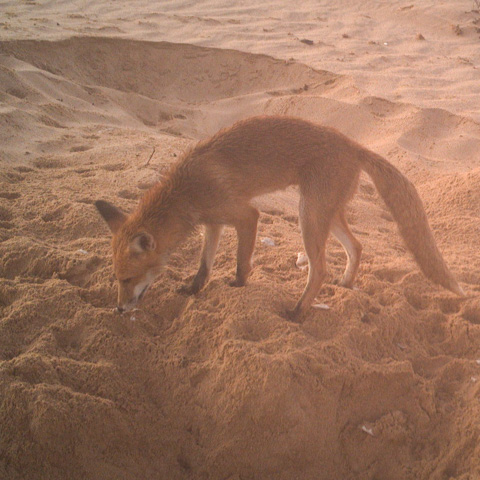
Marine turtles are targeted by predators throughout their life, from eggs in the nest up to adulthood. If they manage to avoid foxes, goannas, seagulls and crabs (just to name a few) and swim away from the shore, flatback turtles are then thought to stay in shallower waters than other marine turtle species, meaning they are around more predators from an early age. Research has shown that they develop defence mechanisms earlier than other marine turtle species and one has even been observed defending itself against a shark! Photo - DBCA
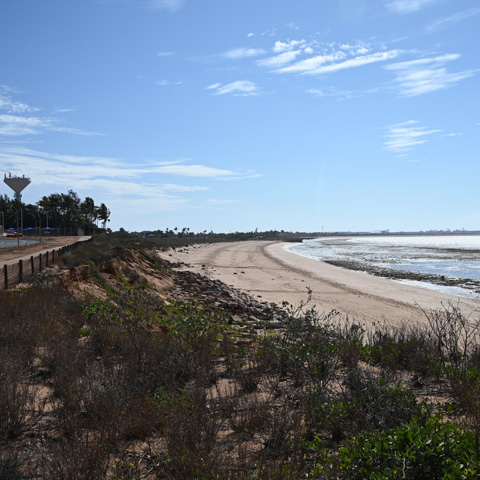
The North West Shelf is in the Pilbara region of Western Australia, which has a lot of industrial activity both near the beach (such as ports) and in the ocean (such as oil rigs). Threats to marine turtles from these developments include habitat modification, chemical spills, boat strikes, increased predators (as they can shelter in places like jetties), and the light produced by structures such as ports, jetties and streetlights. NWSFTCP staff provide advice on how impacts can be minimised to find a balance between resource needs and conservation. Photo - Tristan Simpson/DBCA





